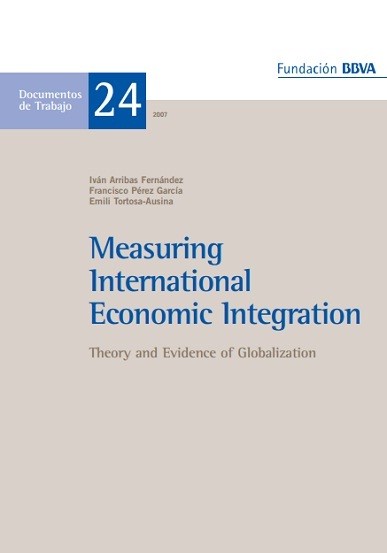
PublicationWorking Papers
Measuring International Economic Integration
Theory and Evidence of Globalization
This article features a set of indicators designed to measure international economic integration and globalization. We analyze the degree of openness and the respective networks of connectionsboth direct and indirectfor each economy in our sample. Our indicators are based on network analysis techniques and the exchange of flows among world economies. Starting from four basic axioms of international economic integration, we define a Standard of Perfect International Integration, along with a set of indicatorsfor degree of openness and connectedness, both for each specific economy and for the world economy as a whole.
We apply our indicators to data on trade flows for 59 countriesaccounting for 96.7% of world outputfor the 1967-2004 period. According to our results, international economic integration is higher than what traditional degree of openness indicators suggest. The advance of globalization is unequal among countries because of the differing trends in their degree of openness and the differences in the intensity with which economies are connected to each other. Several economies now appear to be internationally integrated; however, the relatively low degree of openness in some of the largest economies jeopardizes the progress of globalization. We also perform some simulations which suggest that, should technological progress lead to an increase in indirect connections, the move towards greater international economic integration would accelerate.
